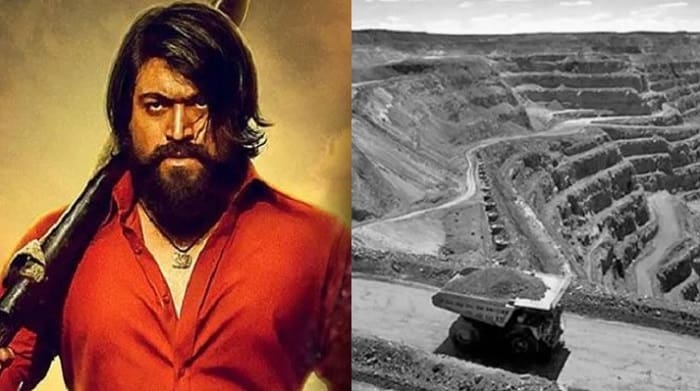KGF Chapter 1 was released in the year 2018, which was liked by the South Cinema as well as the Hindi audience, and now, KGF chapter 2 is also ready to be released. The story of KGF Chapter 1 was related to a gold mine that was loved by the fans so much that people started demanding a sequel after the release of the first part. But did you know that the history of the mine on which the film KGF is based is more than 100 years old? The history of excavation in KGF is 121 years old and it is said that in these years 900 tonnes of gold have been extracted from the mine.
Today we are here to present the story of one such gold mine in India, which once gave us the largest amount of gold in the country, but today this place is deserted due to the neglect of the rulers. There was a time when about ten thousand people used to work here, but today they are stumbling for their rights for years. This gold mine used to produce so much gold that the need to import gold to India was negligible, but ever since this gold mine was closed, the burden of importing gold on India is increasing continuously. By now you must have understood which gold mine of India we are talking about here. KGF or Kolar Gold Fields, the place where once a famous gold mine exists. But later due to many reasons this gold mine got closed. So before knowing why and how it was closed, it is important to know how the golden history of the Kolar Gold Fields actually served the nation.
The Kolar Gold Fields, located about 100 kilometers from Bangalore, the capital of Karnataka, is the oldest gold mine in India. Here the excavation for gold first started in the first century and for many centuries K.G.F. used to be the source of income for the South Indian rulers. Between the 1980s and 1990s, excavations were carried out up to three kilometers below the earth's surface, and only some mines in South Africa are considered deeper than this. During the British rule, the British people named Kolar Gold Field as "Little England", because the climate here is quite similar to that of Britain. In 1880, an engineering company got a contract to extract gold from here, and this was in a way the last attempt of the British government to extract gold from here. Because before this many companies had proved unsuccessful in extracting gold from the area.
Fortunately, John Taylor & Sons Engineer Company found gold here, and as soon as gold was found, the Kolar's days started changing. This city was electrified in 1902, making it one of the first Asian cities to get this facility and the first city in India to have electricity. After India being independent, in 1956, Kolar gold mines were nationalized and in 1970 Bharat Gold Mines Limited (BGML) took over the control of these mines. But after getting success in the beginning, due to many reasons including heavy staff, the profit of the company decreased day by day, and by 1979, the situation became such that the company became indebted. Through retrenchment, the number of staff was decreased from 8800 to 3500, but despite the shedding of staff, there was no improvement in the condition of BGML and in 2001 the government closed BGML completely, as the company did not even have money to pay salaries to its employees.
After the employees left Kolar, the Kolar Gold Fields spread over 13,000 acres have become like a haunted town. But still many agencies believe that there is still a lot of gold in KGF, so the present central government has announced to restart of BGML in 2017. With the opening of these mines, some part of the ever-increasing demand for gold in the country can be met and it will also reduce the burden on the country's pocket. You will be surprised to know that in 1905, India was in the sixth position in the world in terms of gold production, as then it produced an average of 20 tonnes of gold annually. By 2007, this figure has reduced to only two and a half tons, and today India does not have any position in gold production in the world. Therefore, it is quite possible that with the reopening of KGF, this situation may also change and India may again achieve a respectable position in terms of gold production.













0 comments:
Post a Comment